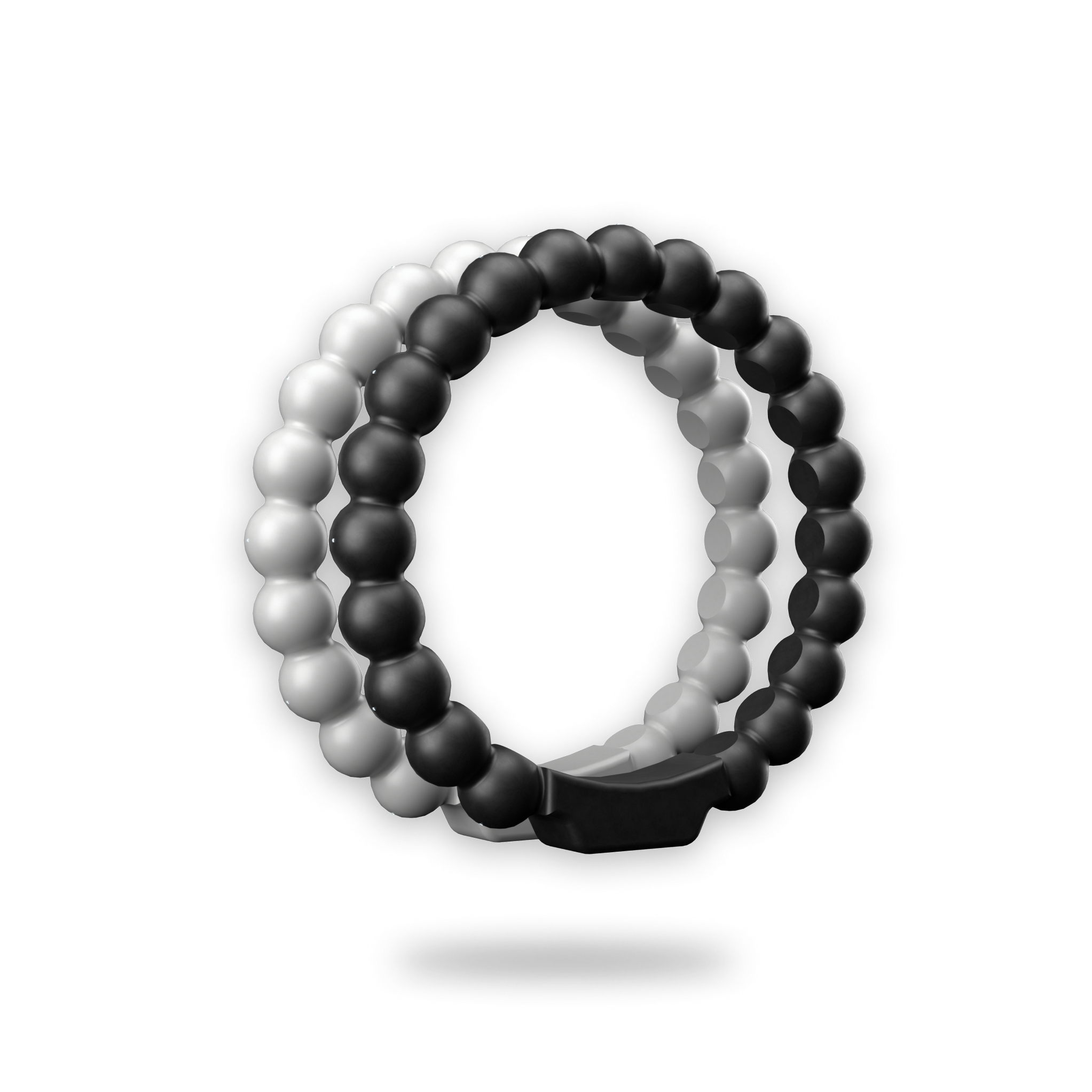
ZEPHYR HEALTH
My Role and Focus
Primary User: Public aiming to improve their mental health.
Project & Timeline
CU New Venture Challenge Semi-Finalist
Fall 2022 - Spring 2023
Tools
Google Survey
Fusion 360
C++
Mental Health has become a major concern - how can we fight back?
Mental illness has been on the rise in the United States, with an estimated 51.5 million adults experiencing it in 2020. Efforts have been made to expand mental health services, largely through telemedicine and mental health apps. However, lack of universal access and, excessive screen time concerns have made reliance on the same technology limited in effectiveness. An effective, affordable, and accessible solution that exists agnostically of smartphones and screens is needed to address the growing mental illness trend in the US.
Breathing is Powerful
Mindful breathing practices have been shown in clinical research to have a significant impact on the physiological response to stress shown in clinical research to have a significant impact on the physiological response to stress.
When practiced regularly, breathing techniques can help achieve high level of heart rate coherence, a state in which the heart rate variability is synchronized with the breathing rhythm, promoting overall health and well-being.

Why don’t more people practice if it’s so simple and effective?
We conducted a survey (n=112) to identify causes for it’s current lack of adoption

Is there truly a need in the market for a new product?
I took a look the the growing mindfulness and mediation technology market with the intention of discovering if in fact, there was a solution the specific problem we identified.

If
- easy to use and can be used anywhere
- promotes healthy habit formation
- accessible to the masses
- has impactful results
Then
Branding
A Brand Identity was created that combines the elements of air, with color ways that were representational of calm, and earth. The logo also incorporates both symbology for wind, with aligned sin waves, representing coherence of the breath and heart rate. Fine line and light fonts articulate simplistic usability, clarity, and empirical approaches to an historically subjective

Brand Logo
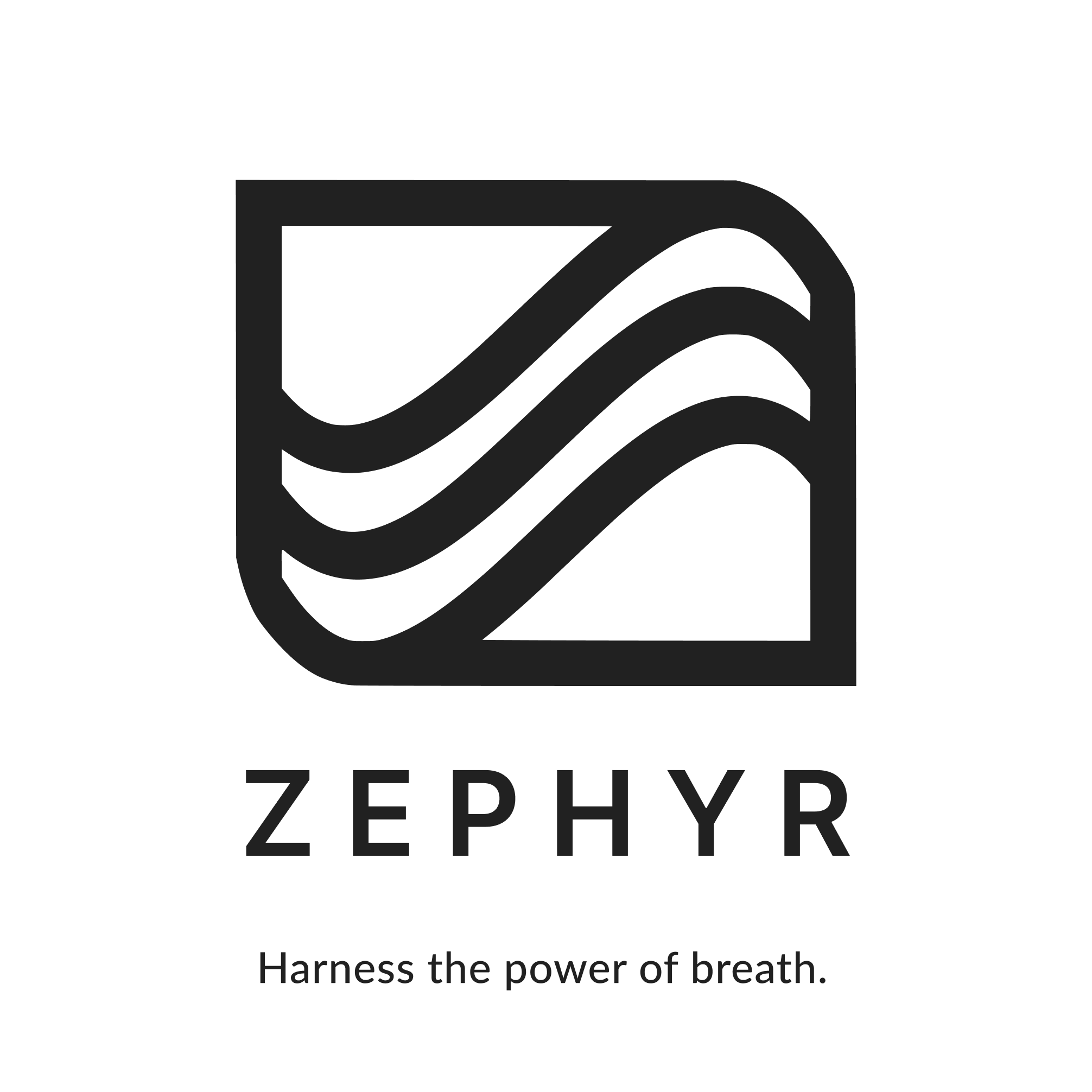
Mobile App Logo

Low Fidelity
The sketch below is a depiction of the wearable form factor as well as how it would integrate into an app experience.
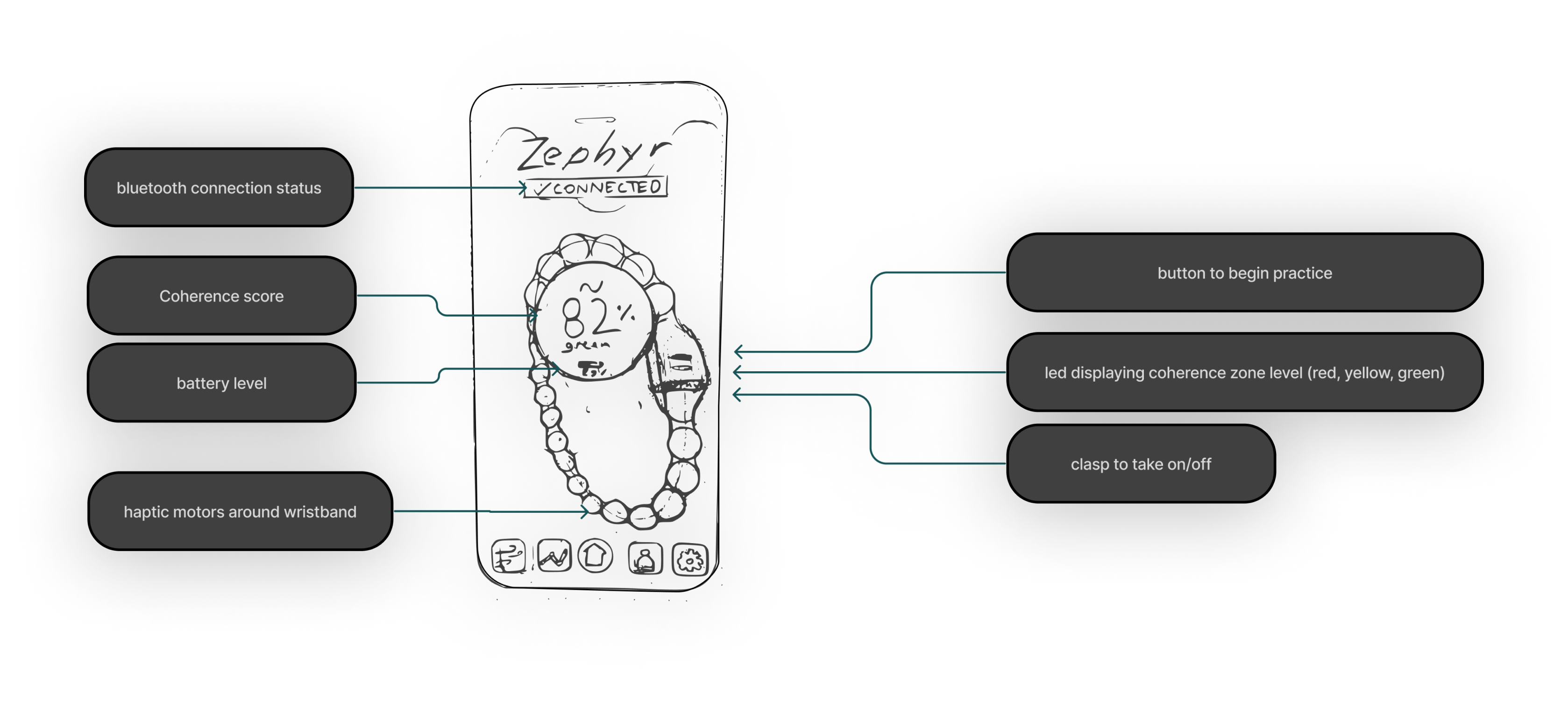
I arrived at a user experience that would guide the user through breathing practice using haptic vibrations. The vibrations would oscillate to mimic the pattern of an inhale and exhale of the breath.
8 motors were positioned around the wrist to denote where the user was in breathing practice. A heart rate monitor was also imbedded into the device - this would allow the device to calculate how aligned or *coherent* the breath was to the heart rate.
Three LED's were also included to provide a visual stimulus of coherence in real time, allowing the user to become guided in breathing practice, and see their nervous system respond in real time.
Architecture
Wearable Wristband
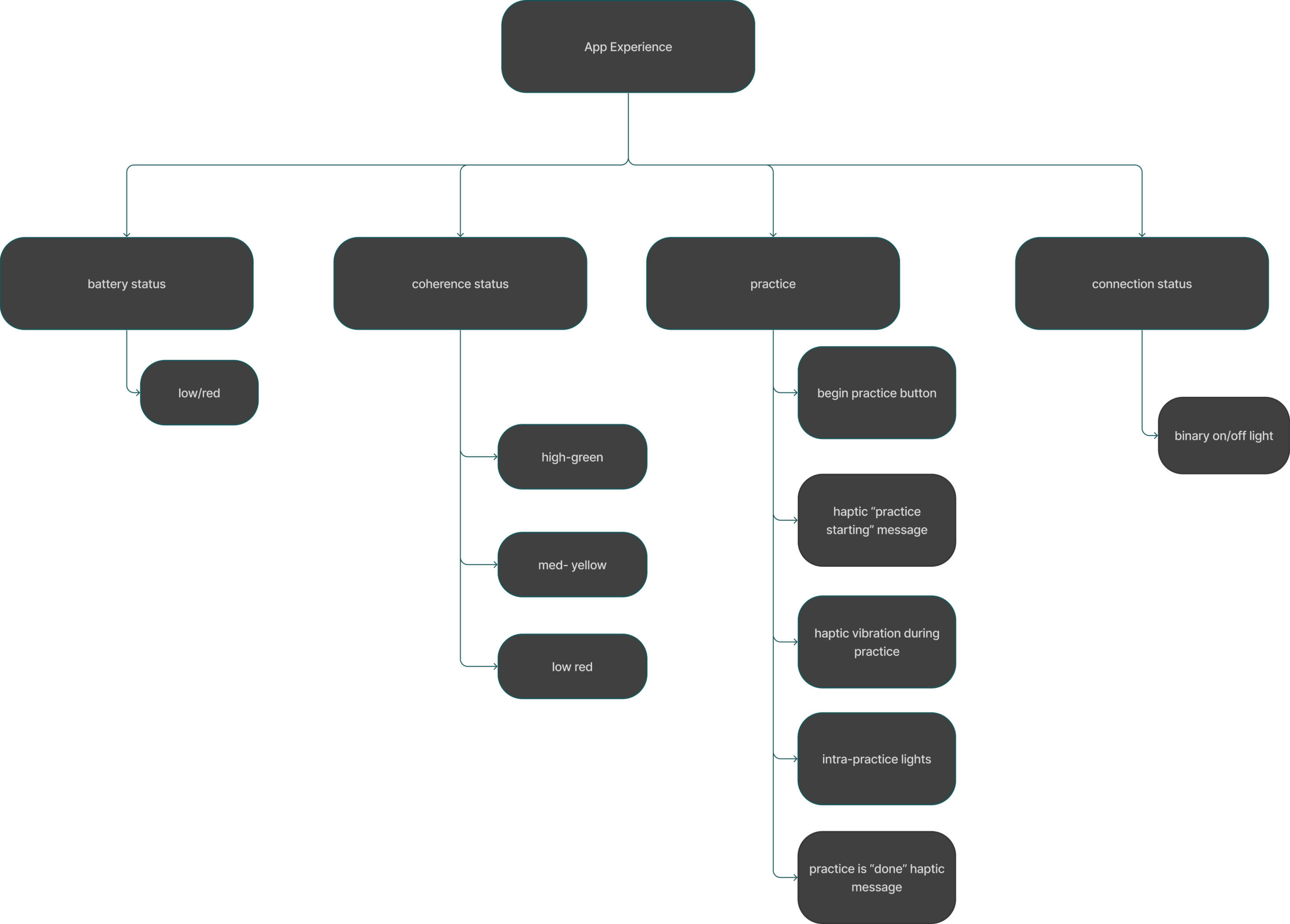
Mobile App

Nuts and Bolts
We audited PCB’s needed, gauged constraints, built the circuits, 3D printed enclosures, and created a functional hardware prototype for testing and product pitching purposes
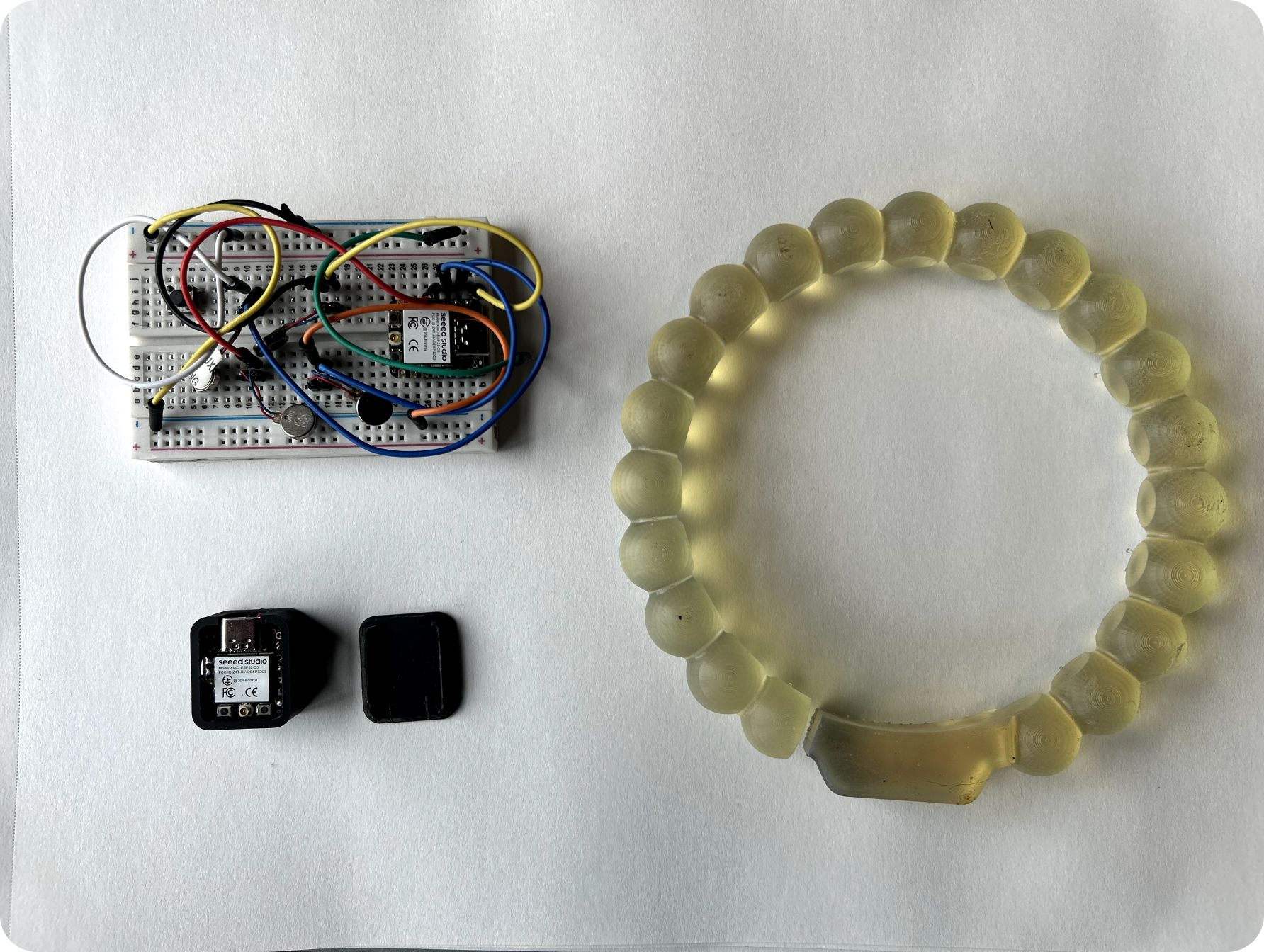


Design Considerations
Ease of Use and Immersion
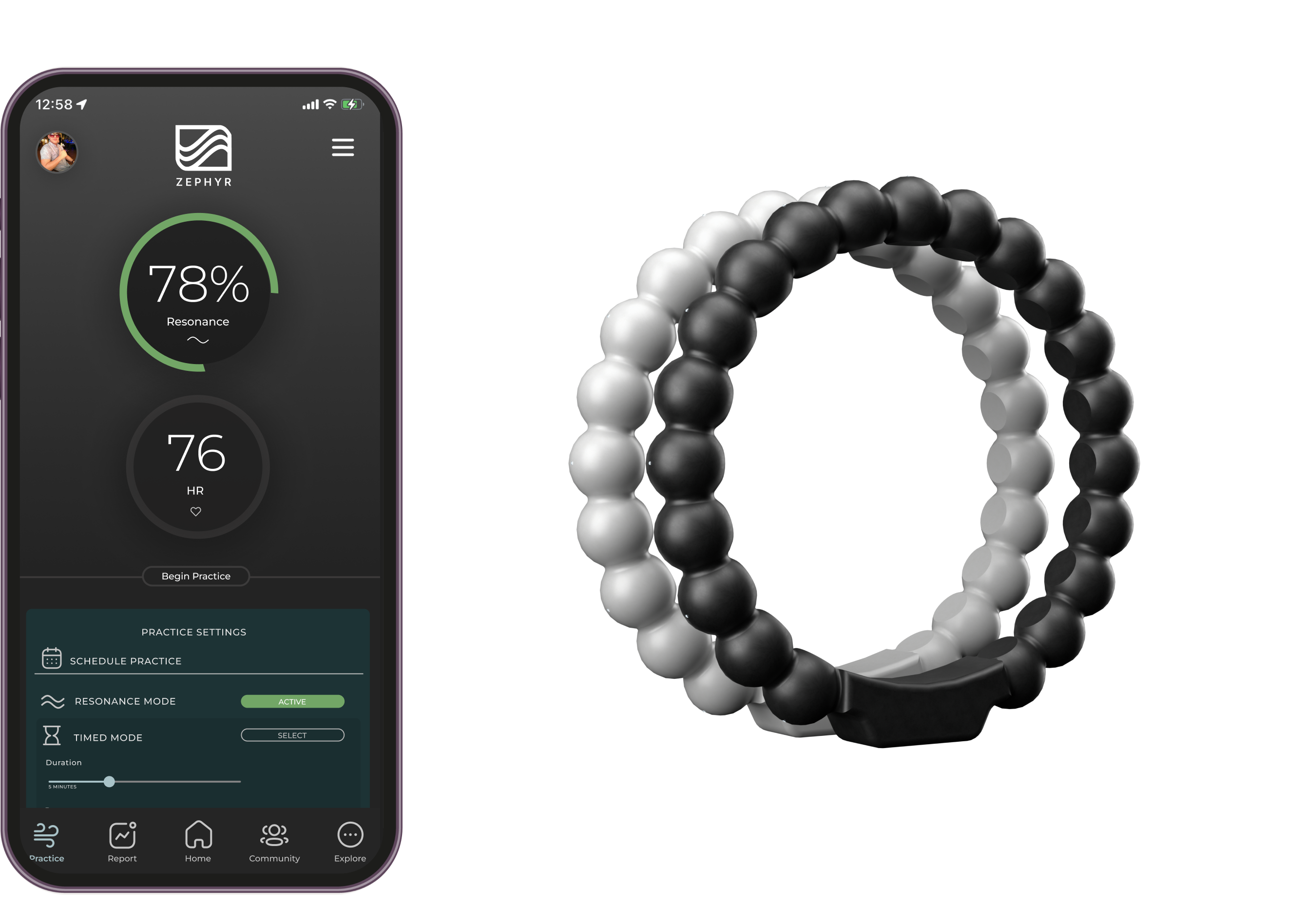
The meditation bracelet was designed to be used agnostically of the smartphone app - with the intentioned of being able to trigger practice discretely, anywhere at any time. The wrist band signals to the user when practice is beginning and ending with haptic vibrations, and the motors vibrate around the wrist in accordance to the breathing practice selected.
Habit Formation

We have integrated the key tenets of gamification into the app experience, allowing users to track their progress over time, unlock achievements, and reach new levels, as well as comparing score with other users as a social proof.
Evidence of Impact & Feedback
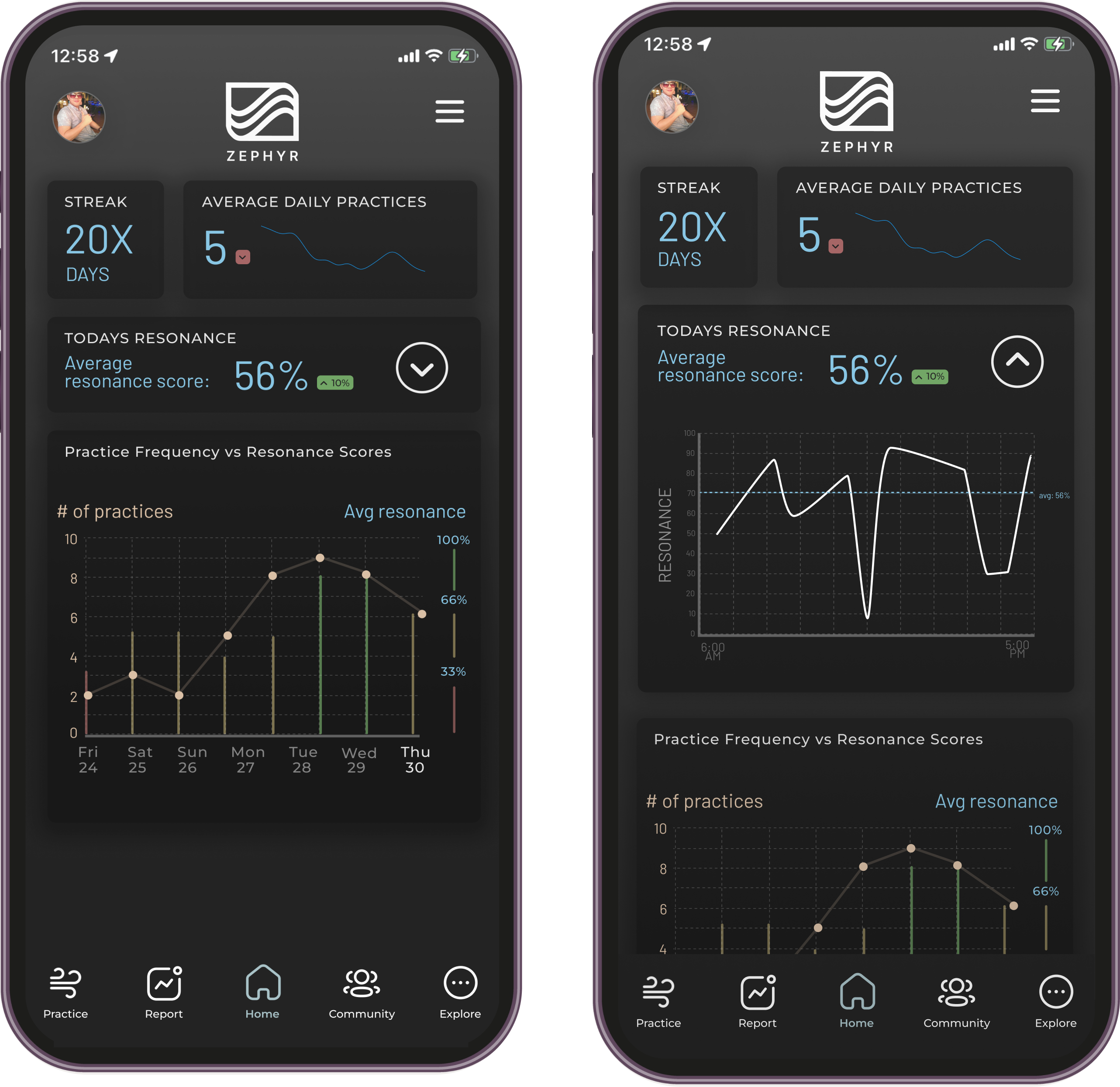
In the report function of the app experience, users are able to see empirically, how their coherence is changing in relation to their practice frequency. being able to visualize the cause and effect relationship enables users to see the value practice is having on their bodies, and aid them in maintaining consistency to optimize the value of their practice.
Results and Next Steps
The team entered Zephyr in CU’s new venture challenge , a prestigious Venture Capital Pitching competition

Results:
Semi-finalists ; top 10% out of 50+ ideas & teams.
Received 2 rounds of pre-seed funding from University of Colorado Boulder.
